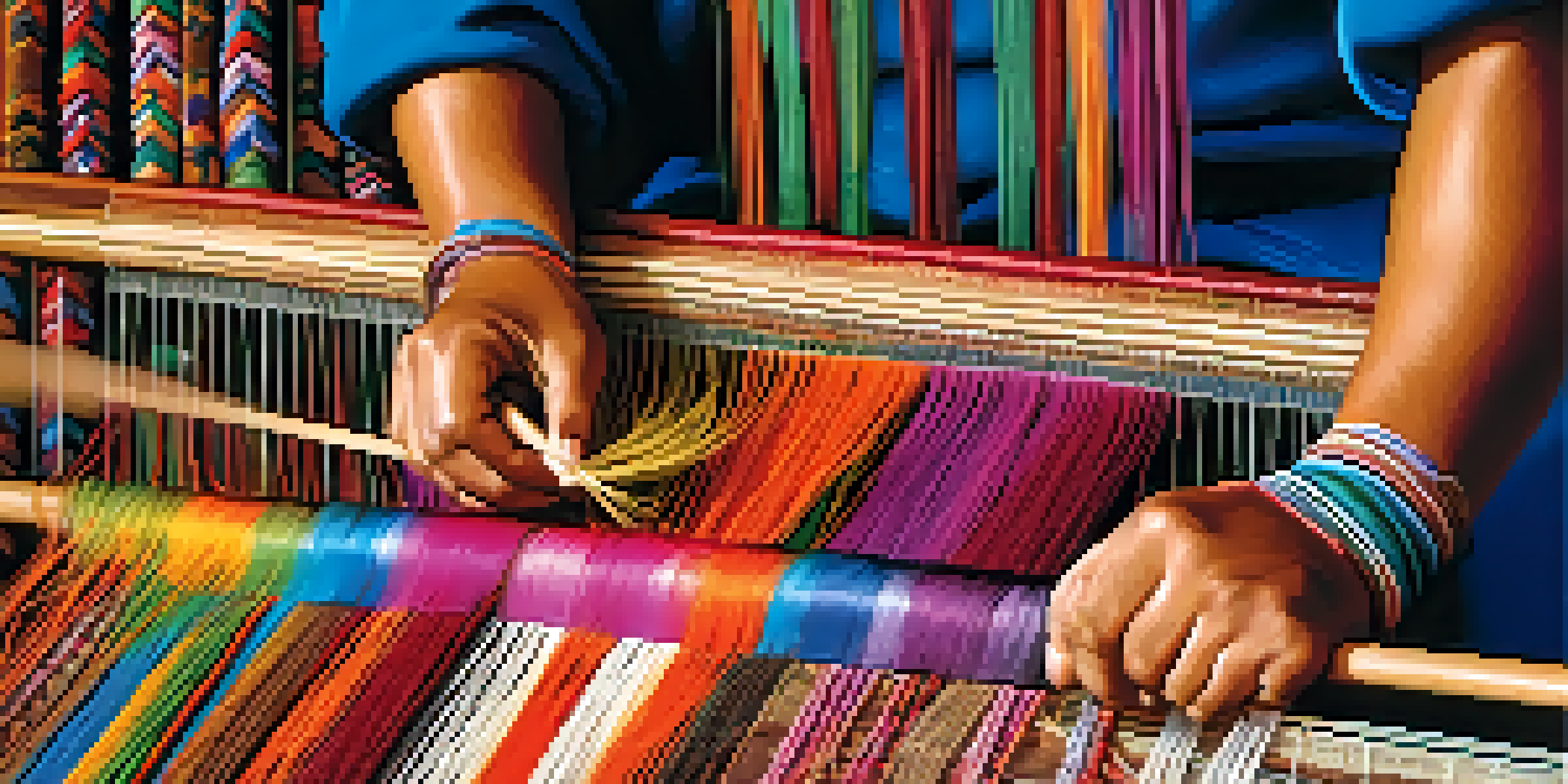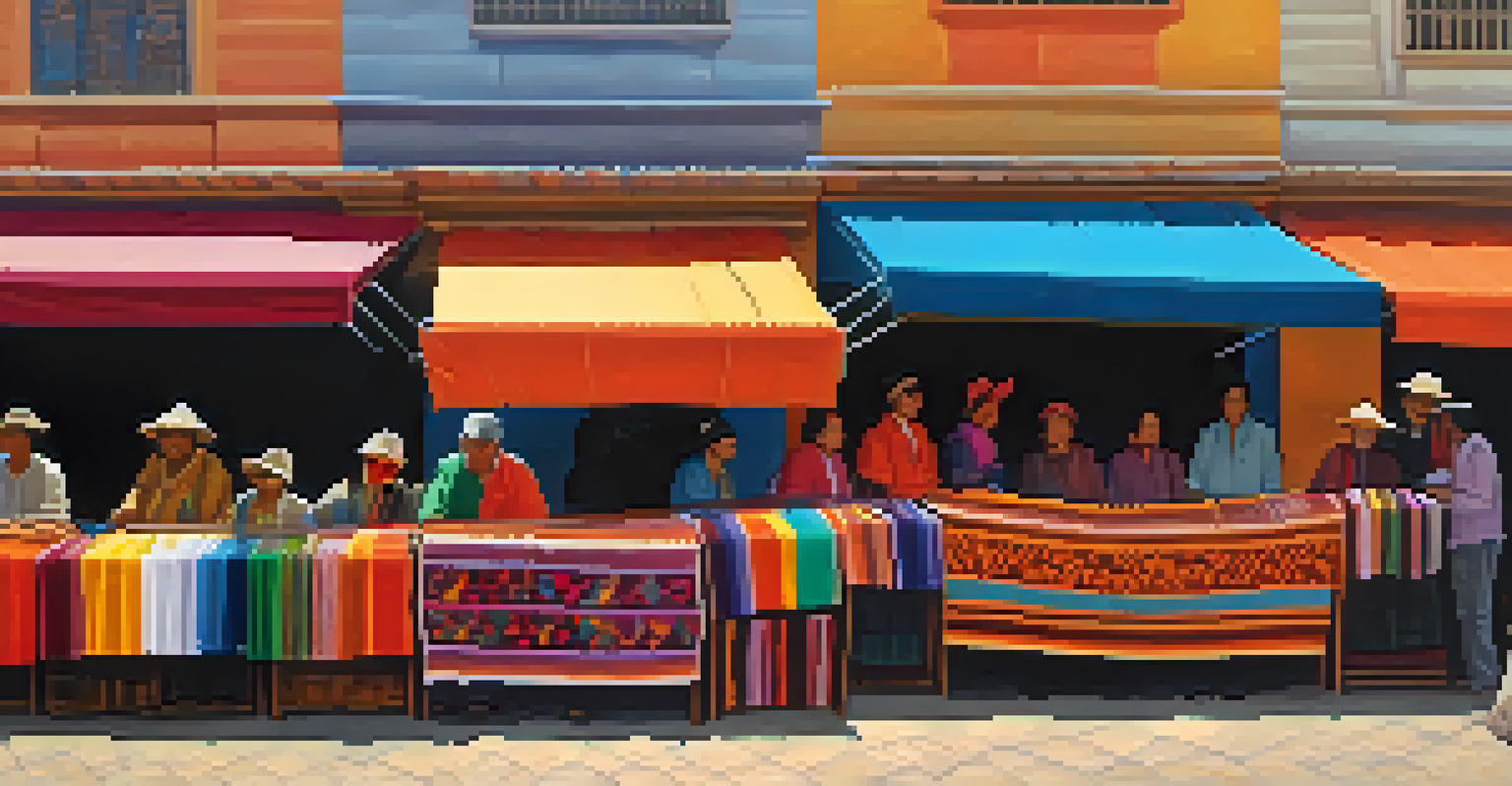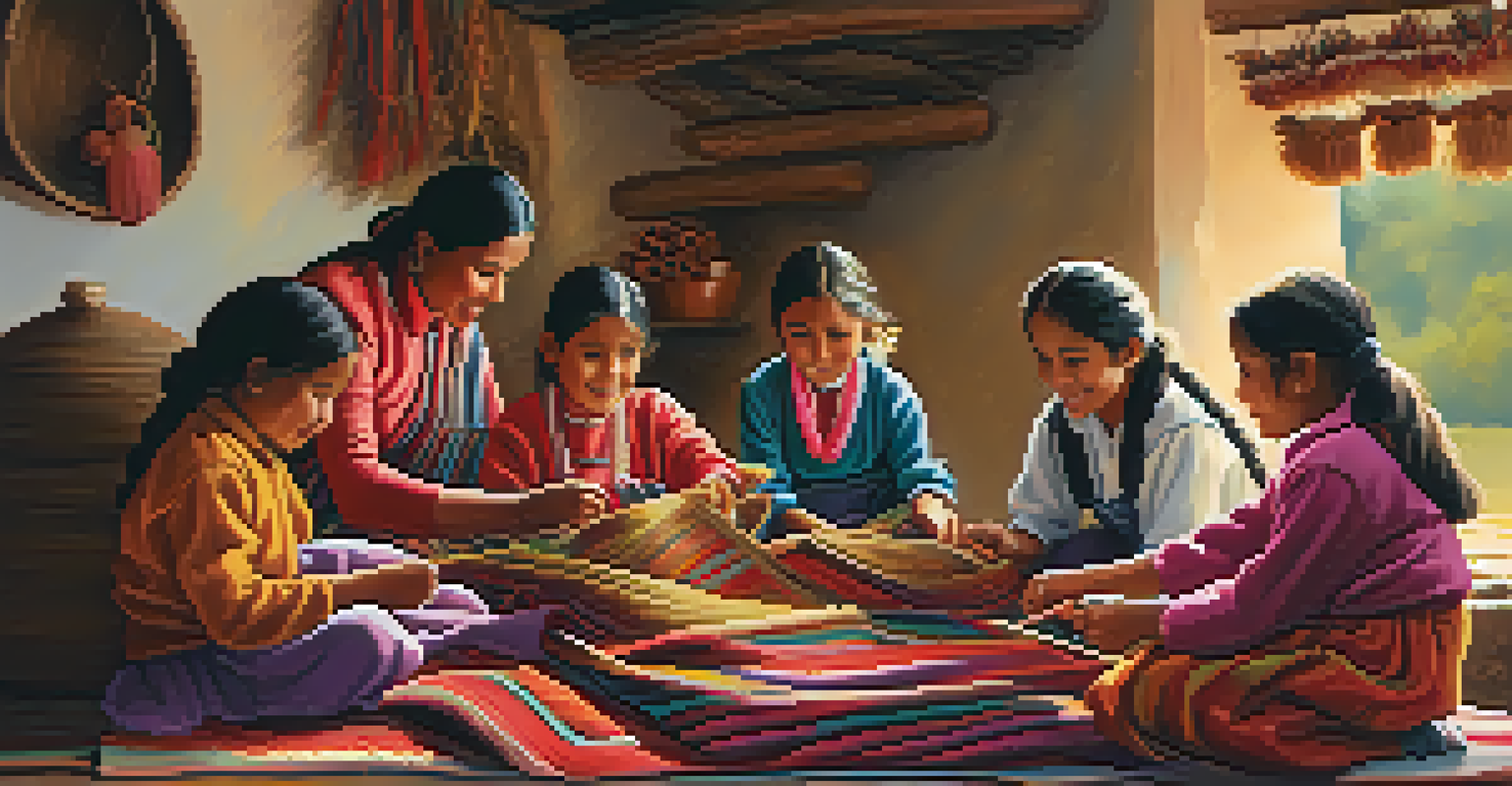The Art of Weaving: Peruvian Traditions and Techniques

An Introduction to Peruvian Weaving Traditions
Weaving in Peru isn’t just a craft; it’s a vibrant expression of culture and history. For centuries, indigenous communities have passed down intricate techniques that transform fibers into stunning textiles. These traditions are deeply intertwined with the identity of Peruvian people, showcasing their connection to the land and their ancestors.
Textiles are a reflection of the culture that creates them, embodying the stories, struggles, and triumphs of their people.
The art of weaving often begins with the selection of materials, primarily wool from sheep and alpacas, which are abundant in the Andean region. Each fiber carries its own story, reflecting the environmental and cultural influences of the specific area. This careful selection process sets the foundation for a beautiful textile, rich in texture and meaning.
As we explore these traditions, it’s essential to recognize the role of community in the weaving process. Families and friends often gather to share knowledge, ensuring that the skills are preserved for future generations. This collaborative spirit not only strengthens bonds but also fosters a sense of pride in their cultural heritage.
The Techniques Behind Peruvian Weaving
Peruvian weaving techniques vary significantly between regions, each with its own unique flair and methods. Traditional techniques, such as backstrap loom weaving, have been practiced for thousands of years. This method involves using a simple loom that’s secured around the weaver’s back, allowing them to create intricate patterns with precision and care.

Another fascinating technique is the use of natural dyes, which are derived from local plants, insects, and minerals. These dyes not only provide vibrant colors but also connect the weaver to their environment. The process of dyeing requires knowledge of both the materials and the timing, making it an art in its own right.
Weaving Reflects Cultural Heritage
Peruvian weaving is a vital expression of identity, deeply rooted in community traditions and storytelling.
As we delve into these techniques, it’s important to highlight the symbolism often embedded in the designs. Many patterns tell stories or represent elements from nature, such as mountains, rivers, or animals. This storytelling aspect adds a layer of depth to the textiles, making each piece a unique narrative woven into fabric.
The Role of Weaving in Peruvian Culture
Weaving is more than just a craft in Peru; it plays a significant role in community and cultural identity. Textiles are often used in important rituals and celebrations, symbolizing status and heritage. For instance, traditional garments woven for festivals are adorned with specific patterns that signify the wearer’s community and lineage.
Weaving is a way of connecting the past with the present, ensuring that traditions are not just remembered, but lived.
Moreover, weaving serves as a medium for preserving history. Each woven piece tells a tale of the people, their struggles, and their triumphs. This storytelling is crucial, especially in a world where many indigenous cultures are at risk of being forgotten.
The importance of weaving extends beyond artistic expression; it also supports the local economy. Many artisans sell their textiles in markets or online, allowing them to sustain their families while keeping their traditions alive. This blend of art and commerce is a vital part of the contemporary Peruvian landscape.
Notable Peruvian Weaving Styles
Throughout Peru, various regions boast distinct weaving styles, each reflecting local traditions and influences. The textiles from Cusco are particularly renowned for their vibrant colors and complex patterns, often depicting local flora and fauna. This region's history as a cultural hub of the Inca Empire greatly influences its weaving practices today.
In contrast, the highland communities, such as those in Ayacucho, produce textiles that are characterized by earthy tones and geometric designs. These pieces often incorporate traditional motifs that have been passed down through generations, highlighting the community's connection to the past.
Challenges for Traditional Artisans
Modern challenges, such as globalization and resource accessibility, threaten the livelihoods and authenticity of Peruvian weavers.
Finally, the coastal areas of Peru have their unique flair, often incorporating lighter fabrics and different patterns inspired by the sea. This diversity in styles not only enriches the Peruvian textile landscape but also showcases the adaptability and creativity of its weavers.
Modern Challenges Facing Peruvian Weavers
Despite the rich heritage of Peruvian weaving, artisans today face numerous challenges that threaten their craft. Globalization and the influx of mass-produced textiles have made it difficult for traditional weavers to compete. This shift often leads to a decline in demand for handcrafted items, which can jeopardize the livelihoods of many skilled artisans.
Additionally, access to resources has become a pressing issue. As natural dyes and traditional materials become harder to source, many weavers are forced to adapt, often compromising the quality and authenticity of their work. This change raises concerns about the preservation of traditional techniques, as the next generation may not have the same opportunities to learn.
Despite these challenges, many artisans are finding innovative ways to market their crafts, leveraging social media and online platforms to reach broader audiences. By sharing their stories and the cultural significance of their textiles, they are not only sustaining their craft but also educating consumers about the value of handmade goods.
The Future of Peruvian Weaving
Looking ahead, the future of Peruvian weaving hinges on a balance between tradition and innovation. Many weavers are exploring new designs and techniques while still honoring their roots. This blend of old and new allows for the creation of textiles that resonate with both local and global markets, ensuring that these traditions remain vibrant.
Education plays a crucial role in this evolution. By teaching the younger generation about the cultural significance and techniques of weaving, communities can empower them to carry on these traditions. Workshops and programs that engage youth are essential for maintaining the craft's relevance in modern society.
Supporting Weaving Artisans Matters
Purchasing handmade textiles and raising awareness can significantly impact the lives of Peruvian weaving artisans and help preserve their craft.
Finally, fostering partnerships between artisans and fair-trade organizations can help ensure that the artisans receive fair compensation for their work. This not only supports the local economy but also encourages the preservation of traditional weaving techniques. Together, these efforts can help secure a bright future for the art of Peruvian weaving.
How to Support Peruvian Weaving Artisans
Supporting Peruvian weavers is easier than you might think and can make a significant impact on their livelihoods. One of the most direct ways to help is by purchasing handmade textiles directly from artisans or reputable fair-trade organizations. This ensures that the weavers receive a fair wage and helps sustain their communities.
Another great option is to spread awareness about Peruvian weaving and its cultural significance. By sharing information on social media or discussing it with friends, you can help generate interest and appreciation for these beautiful crafts. The more people understand the story behind each piece, the more likely they are to value and support it.

Lastly, consider participating in workshops or cultural events that promote traditional weaving techniques. Engaging with the craft firsthand not only deepens your understanding but also shows your support for the artisans. Every small action contributes to the preservation of this incredible art form and the rich heritage of Peru.